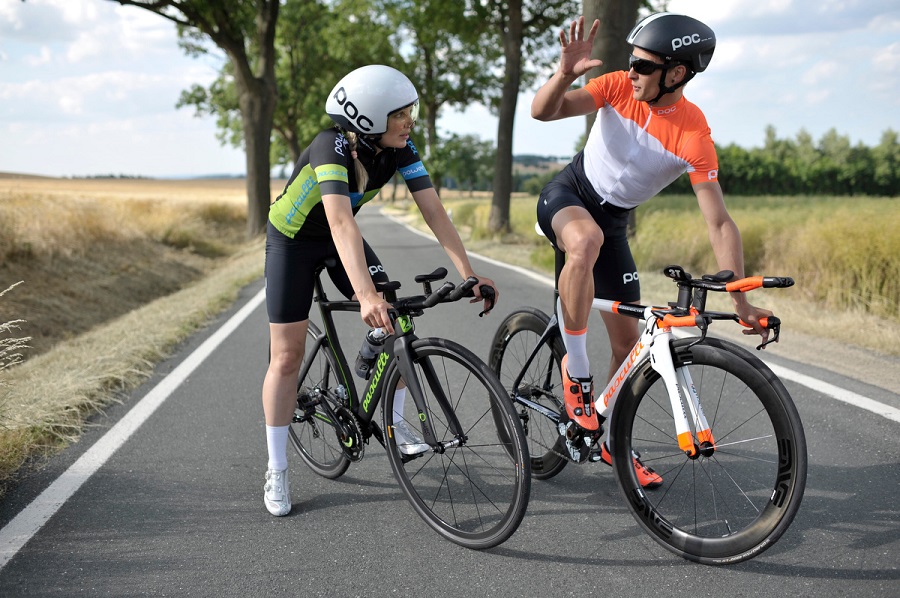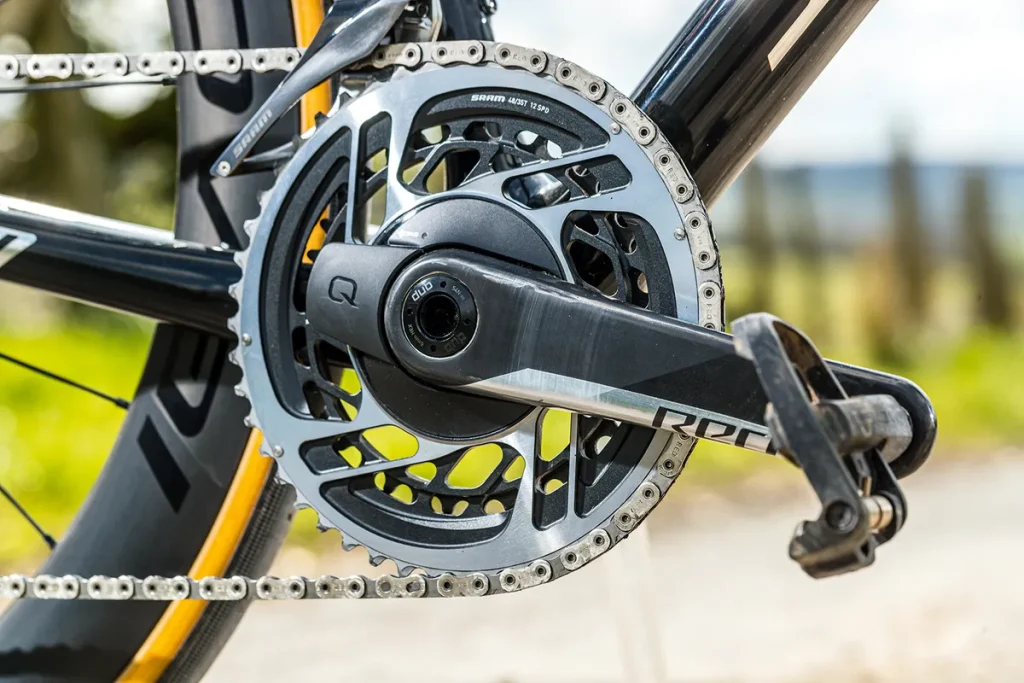Customize Recovery Based On Output Fluctuations
Power meters output an invaluable source of information that can be used to refine recovery strategies. By analyzing the fluctuation of the outputs in the time span of a ride, a cyclist or cycling coach can implement recovery periods that match the intensity and variability of the effort. If the hill climb results in an intensity that is highly outside of the mean range for a particular ride, a cyclist might need to rest more following this segment.
Nutrition that Matches Energy Expenditure
The energy output as measured by a power meter is a solid determinant of nutritional needs. By analyzing the power output of the ride, a cyclist or coach can design ideal post-ride meals or snacks, selecting them based on the caloric output from the source of the power. This approach will ensure that nutrient intake is directly related to the energy production, allowing for faster muscle recovery. An example of such an approach is consuming greater quantities of carbs after a long and highly variable ride, as the higher level of intensity goes through glycogen stores quickly.
Rest Days Based on Weekly Data
Rests are crucial episodes in cycling due to their beneficial effect of long-term performance and health. By analyzing a week’s worth of power data, a cyclist or coach can design rest days based on a decrease in average power, which signals fatigue and the necessity to rest. In this way, overtraining can be prevented and overall performance enhanced, which is the main concern for sport cyclists and other high-level events.

Recovery Sessions Paired with Power Data
Active recovery sessions can also be better wear out for defined power output values. An athlete or a coach after an intensive session might decide to go on a bike ride at 50% power. In such a way, the athlete does not lose fitness while guarding against recovery.
Segment Training Sessions By Power Zones
Power meters have revolutionized training, as they allow cyclists to divide their workouts according to specific power zones. It is ensured that in this way each workout is targeted for a selected group of goals starting from endurance and threshold to VO2 max. Precisely, this allows riders to structure their power-based training session by spending predetermined time periods in each power zone at the full throttle adjusted for their levels.
Creating Customized Intervals
It is possible to develop training intervals catered to personal strengths and weaknesses on the basis of available performance data. If several short efforts are easily maintained, a person can consider extending durations of intervals within the threshold power zone. This would help improve the stamina required to remain in the zone for longer periods of time. Continuous riding in this power zone would result in developing this aspect of the training and reach maximum lengths.
Making Real-Time Adjustments during the Ride
Power meters enable making on-the-field adjustments when riding. If a person aims to stay in the temp zone but their level of power exceeding the zone and it is hard to reduce it, they can “dial it back” so that “the power settles confidently in the correct zone”. It is hard to maintain the same effort on the hills and flats without a power meter.
Measuring Period over Period Gains
Gains made from different training periods are easily measured when focusing on the power zone data. It is easy to note the areas where IIA period had more time being on a specific power and compare them. If a training increase did not lead to a change in perceived exertion and all the time it was at a certain power and heart rate zone, counting time develops becomes automatic and easy to register any changes.
Benchmark Performance Based On Historical Data
Power meters do not only show the current power output but also save the power data. Cyclists can use their historical data of the power output to see their performance in the past over time. This is a very important feature, as it allows cyclists to set realistic performance goals and be able to train and prepare for certain races or training blocks effectively.
Personal Bests and Goal Setting
If a cyclist has the highest average power step of 20 minutes in the last six months and this number has steadily and gradually increased this enables the athlete to set and announce a new the goal that reflects their improved ability. Any cyclist can use historical power output data and their own personal best to set a goal for their training or race.
Seasonal Performance
Historical power data from different years can be used to analyze seasonal performance. In such a way, you can see when, which month or week was your best this year and compare it with the performance of previous years. You can prepare and peak for everyone in exactly the month, in which your most important race will be.
Recovery Analysis
It is often said that recovery is as important as the training itself. With the power data before and after the designated rest day or when you are “feeling fresh,” you can see if your body actually gained from the recovery days or it has been too much for you. In case there is a significant improvement in your power numbers, it is very much likely that you have rested for “enough,” whichever the word recovery is for you.
Competitive Benchmarking
With modern and especially power meters, it is possible to compare with other users on the same platform or among a small circle of friends. This is not about competition, but knowing where you are in comparison to how other people perform. This can be very educational and motivating. This way, one can see what one lacks, where it is possible to improve, and on what aspects of power zones you should concentrate and where you are strong. One can see how you are performing in different zones in comparison to other cyclists of the same age or cyclists with the same volume of training on your road or in your area.
Optimize Bike Fit And Equipment Selection
One of the most contemporary ways to improve comfort, convenience, and overall performance is to optimize bike fit and equipment options through power meter data. Power-based bike fitting is a data-driven mechanism that ensures that every improvement in the fit of your bike or any piece of cycling equipment will deliver real value in terms of measurable comfort and efficiency. Since the vast majority of biomechanical bike fit techniques rely on empirical evidence from exercise science or sports biomechanics, the efficiency of the approach is appropriate.
Adjusting Saddle Height and Position
Proper saddle height and position are critical to getting the maximum of your power and preventing potential injuries. By changing the height of your saddle, you can detect the changes in the produced power and cadence to attain the best place, where your comfort and power are compatible. It is usually the case that tiny changes may lead to improvements in power efficiency during your longest rides. If you ride your bike that is too high or too low, you may experience serious discomforts, along with challenges in pushing the pedals effectively during climbs or even in some flat situations.
Choosing the Correct Gearing
With the abundant choice of cycling gears, it is not always possible to determine the most efficient gear for your needs. By using the power meter, you may detect how changes in gear affect power production and the zones in which you train. It is possible to monitor power output as well as your heart rate and adjust the gear based on your strength and biking style, getting sufficient information on how you may climb faster in a broader range of terrains.
Alteration of Handlebar and Stem Length
Understanding the optimal length of the handlebar and the stem is beneficial to comfort and efficiency, along with specific control. By using power meter data prior to and after changes in the handlebar position, you can analyze the balance between your power and aerodynamics. The technique is highly beneficial for time trialists and triathletes, for whom aerodynamics and biking speed are of utmost importance.

Evaluation of Pedal and Cleat Settings
With power-based pedal and cleat evaluation patterns, it is possible to obtain substantial evidence of the weaknesses and strengths of your settings. Incorrect pedal settings can lead to a failure of force transfer during an important part of your strokes. Changing pedals can affect your power; get enough information before making conclusive decisions.
Implement Real-Time Coaching Adjustments
One of the significant changes in the cycling data field is the shift towards using power meter data for real-time coaching adjustments. This can be explained by the fact that the ability to monitor a live data feed to inform a cyclist about current performance and adjustments allows to maximize the utility of a coach’s presence.
Adjusting intensity during training on the fly
During a monitored interval, a coach could monitor a real-time data feed and inform the cyclist if his or her output is below the desired intensity. These applications could be combined with earlier examples that estimate optimal time spent in a certain region.
Adjusting the technique
Power meters often also measure each pedal’s output and could provide feedback regarding the technique. A coach could then tell a cyclist to change the geometry of the pedaling style if one foot shows a significantly lower output than another. This could be combined with adjustments considering cyclists’ anthropometry and flexibility, as previously described in the text, for example, how to sit on a bike correctly to increase the output strain.
Adjusting a pace
In competitive scenarios, real-time data could be used to inform a cyclist when he or she should accelerate or decelerate. For example, if current power is significantly lower than the power that was assumed in preparation, a coach could inform a cyclist about the need to save energy after the next stop sign. This could also facilitate quick recovery after uphill sections.
Environmental adjustments
It is also possible to modify pedaling style, placement of a body, or other factors according to vegetation, wind, or other factors that provide resistance. If the winds are up, a coach could tell a cyclist to sit as low as possible.





